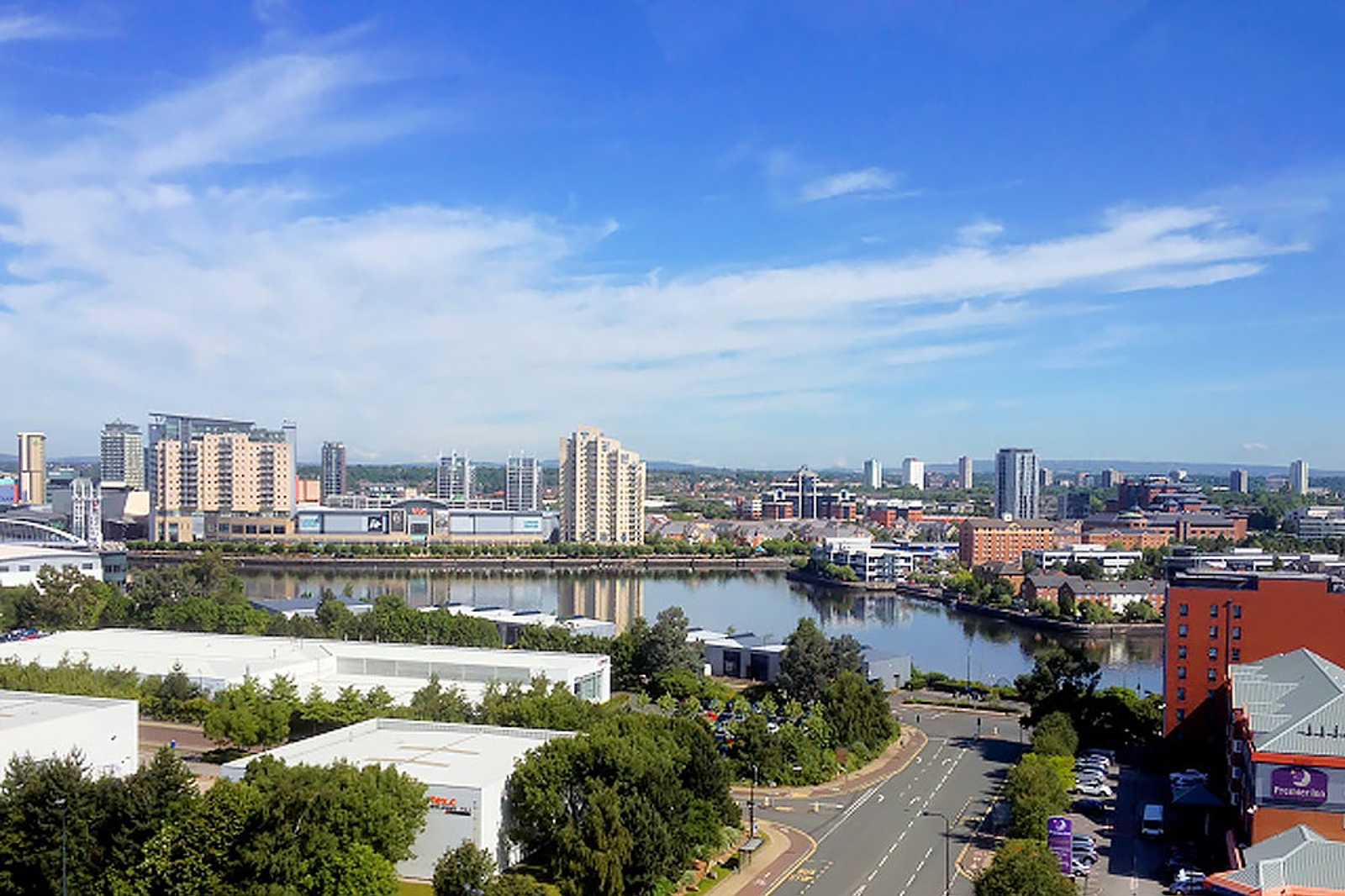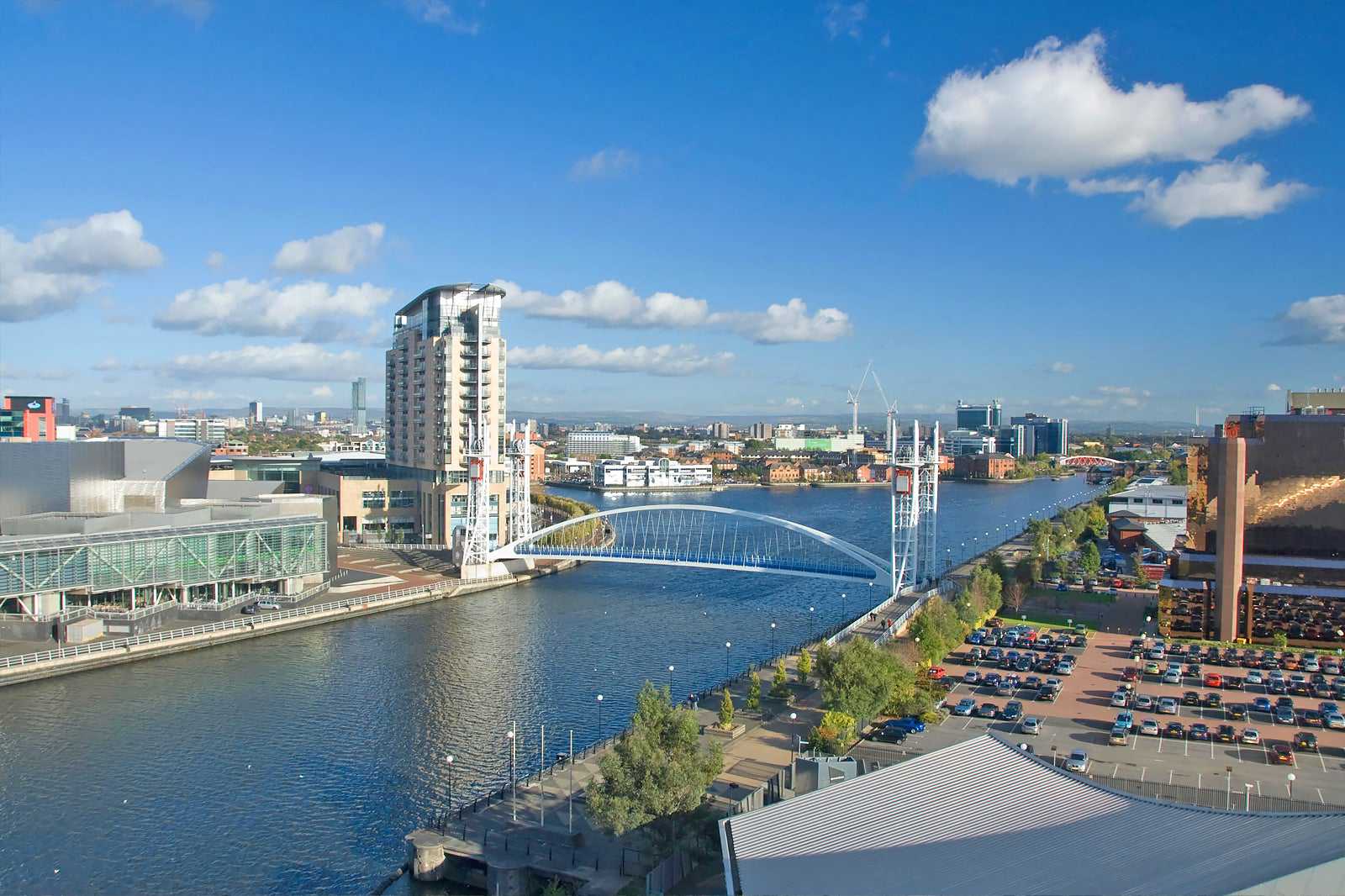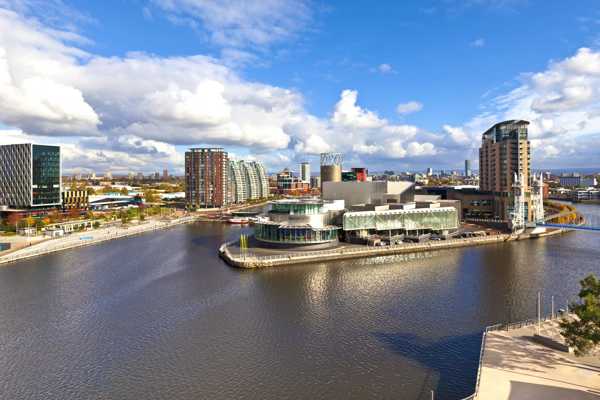Trafford Park is an area inside the Trafford borough of Manchester. It's around 4.6 miles southwest of the city centre, on the southern side of the Manchester Ship Canal. The 4.6-square-mile area was the first planned industrial estate in the world and it remains the largest in Europe. Over 1,400 companies operate from within Trafford Park, with over 35,000 people employed to work there.
Trafford Park has a few notable buildings for visitors to Manchester, such as the Imperial War Museum and Trafford Centre. However, it's most well known for being the home of Manchester United Football Club's Old Trafford stadium, which is located on the eastern fringe of the area.
Trafford Park in Manchester - one of the highlights of 10 Most Popular Neighbourhoods in Manchester (Read all about Manchester here)

foto av Rept0n1x (CC BY-SA 3.0) redigerad
What are the highlights of Trafford Park?
Trafford Park is known as the largest industrial estate in Europe. There's a range of companies operating from the area, such as Amazon UK, DHL Parcel, Unilever Foods and Procter & Gamble. Wholesale stores, retail stores, transport and logistic services and recycling and waste management buildings are all inside the expansive estate.
However, the industrial park is also home to a few notable landmarks and places of interest for travellers. The Imperial War Museum North is in the eastern corner of Trafford Park, on the edge of the ship canal. Opened in 2002, the museum has 3 interlocking sections with 2 exhibition spaces. Just south of the museum is perhaps the most famous of Trafford Park's buildings: the Old Trafford stadium. This football stadium is home to Manchester United Football Club and has a seating capacity of 76,000 people. On the opposite side of the industrial park is the Trafford Centre, which houses a modern mall and SEA LIFE Aquarium.

foto av Charles Bowring (CC BY-SA 4.0) redigerad
A brief history of Trafford Park
Trafford Park was the ancestral home of the Trafford family until the late 19th century. It was a beautiful deer park and estate until it was sold for industrial development in 1896. British Westinghouse was the first major company to move into the area and employed about 6,000 people by 1903. The area attracted manufacturers and was a major supplier of military materials during the First and Second World Wars, such as engines used to power fighter planes.
By the 1960s, companies had closed their factories and moved elsewhere and employment in the park dropped significantly. For many years thereafter, Trafford Park saw a huge decline in prominence until the Trafford Park Urban Development Corporation formed in 1987 to revive it. Since then, the park has expanded again to include 1,400 companies and provide jobs for 35,000 people.

foto av David Dixon (CC BY-SA 2.0) redigerad
Good to know about Trafford Park
Although the industrial aspect of Trafford Park doesn’t warrant a lot of attraction for visitors to Manchester, there are a few noteworthy attractions inside the area. You can easily reach it from the city centre by bus, light rail and taxi. For many years, the bus was the main form of transport to the area, but a Metrolink line was built in 2020 to connect Manchester city centre to the Trafford Centre. You can also access Trafford Park on foot via 2 modern footbridges that cross from the Quays over the Manchester Ship Canal.
Due to the heavily industrial nature of the area, there are few restaurants or eateries around Trafford Park. If you're in the area and looking for a meal, the Trafford Centre has the best places to eat with a range of restaurants and fast-food options. It’s also by far the liveliest place in the area after 5 pm.

foto av Lewis Clarke (CC BY-SA 2.0) redigerad
Trafford Park in Manchester
Adress: Trafford Park, Manchester M17 1SA, UK



















